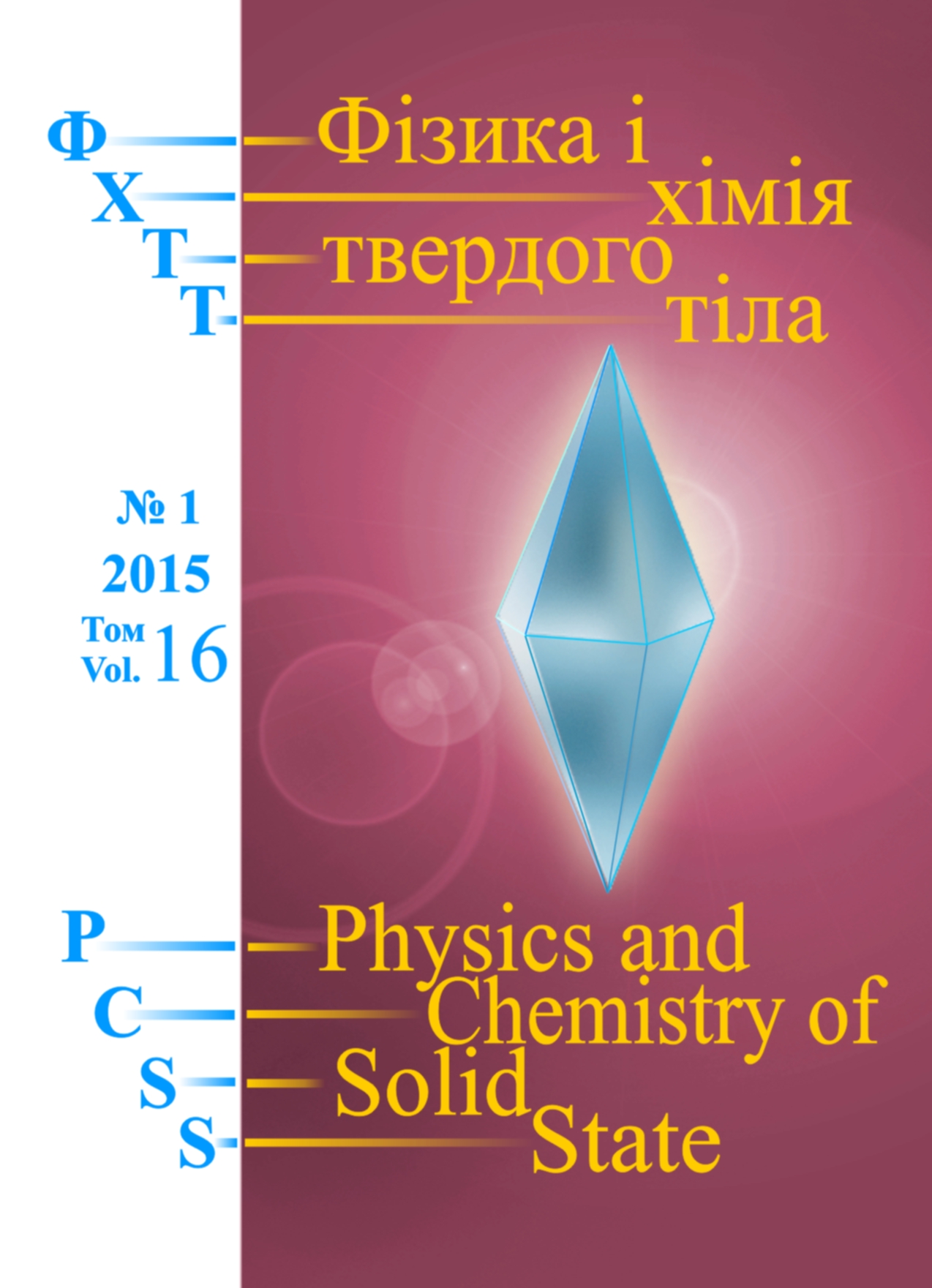Physics and Chemistry of Solid State
2015 Vol.16 №1 |
||
|
|
||
DOI: 10.15330/pcss.16.1.111-115
V.А. Romaka1,2, P. Rogl3, Yu.V. Stadnyk4, L.P. Romaka4, R.O. Korzh2,
D. Kaczorowski5, V.Ya. Krayovskyy2, A.M. Нoryn4
Investigation of V1-xTixFeSb Semiconductor Solid Solution. I. Peculiarities
of Electrokinetic Characteristics
1Ya. Pidstryhach Institute for Applied Problems of Mechanics and Mathematics, NAS of Ukraine, Naukova str., 3-b,
Lviv, 79060, Ukraine;
2National University “Lvivska Politechnika”, Bandera str., 12, Lviv, 79013, Ukraine;
3Institut fur Physikalische Chemie, Universitet Wien, Wahringerstrasse, 42, Wien, A-1090, Austria;
4Ivan Franko National University of Lviv, Kyryla and Mefodiya Str., 6, Lviv, 79005, Ukraine;
5Institute of Low Temperature and Structure Research Polish Academy of Sciences, P.O. Box 1410, 50-950, Wroclaw, Poland
The peculiarities of the temperature and concentration characteristics of resistivity and thermopower of V1-xTixFeSb semiconductor solid solution were investigated in the temperature and concentration ranges of T = 4.2 -400 K and Ті ≈ 9.5•1019–3.6•1021 см-3 (х = 0.005 - 0.20), respectively. The existence of previously unknown mechanism for the generation of structural defects with donor nature which determined the conduction of n-VFeSb and V1-xTixFeSb was established. The acceptor type of structural defects generated in V1-xTixFeSb by substitution of V atoms by Ti ones was confirmed.
Keywords: semiconductor, electrical conduction, electronic structure.
Full text (on original language) .pdf
Home
Reference
[1] D.P. Young, P. Khalifah, R. J. Cava, A. P. Ramirez, J. Appl. Phys. 87, 317 (2000).
[2] K. Kaczmarska, J. Pierre, J. Beille, J. Tobola, R.V. Skolozdra, G.A. Melnik, J. Magnetism and Magnetic Materials 187, 210 (1998).
[3] Yu. Stadnyk, A. Horyn, V. Sechovsky, L. Romaka, Ya. Mudryk, J. Tobola, T. Stopa, S. Kaprzyk, A. Kolomiets, J. Alloys Compd. 402, 30 (2005).
[4] V.V. Romaka, L. Romaka, Yu. Stadnyk, V. Gvozdetskii, R. Gladyshevskii, N. Skryabina, N. Melnychenko, V. Hlukhyy, T. Fässler, Eur. J. Inorg. Chem. 2588 (2012).
[5] Chenguang Fu, Hanhui Xie, Yintu Liu, T.J. Zhu, Jian Xie, X.B. Zhao, Intermetallics 32, 39 (2013).
[6] Minmin Zou, Jing-FengLi, Takuji Kita, J. Solid State Chem., 198, 125 (2013).
[7] L.I. Anatychuk. Termojelementy i termojelektricheskie ustrojstva (Naukova dumka, K., 1979).
[8] R. Ferro and A. Saccone. Intermetallic Chemistry (Elsevier, Amsterdam, 2008).
[9] Yu. Stadnyk, L. Romaka, Yu. Gorelenko, A. Tkachuk, J. Pierre, Intern. Conf. on Thermoelectrics. Proceed. 8-11 June, 2001, Beijing, China, P. 251-253.
[10] V.A. Romaka, V.V. Romaka, Ju.V. Stadnik, Іntermetalіchnі napіvprovіdniki; vlastivostі ta zastosuvannja (L'vіvs'ka polіtehnіka, L'vіv, 2011).
[11] N.F. Mott. Metal-insulator transitions (Taylor & Francis, London-Bristol, 1990).
[12] B.I. Shklovskij, A.L. Jefros, ZhJeTF 61, 816 (1971).
[13] B.I. Shklovskij, A.L. Jefros. ZhJeTF 62, 1156 (1972).
[14] D. Fruchart, V.A. Romaka, Yu.V. Stadnyk, L.P. Romaka, Yu.K. Gorelenko, M.G. Shelyapina, V.F. Chekurin, J. Alloys Compd. 438, 8 (2007).
